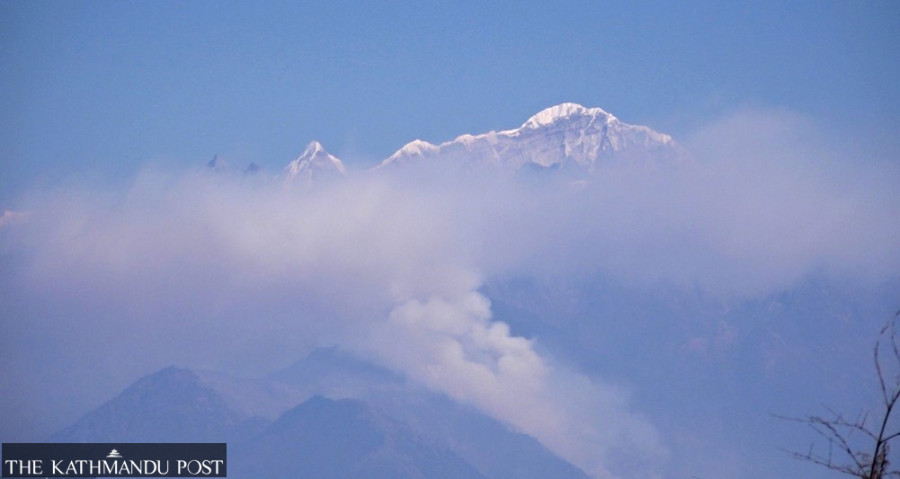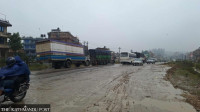Weather
Wildfire troubles Gaurishankar area, smoke hides snow-capped peaks
The wildlife, which descends to lower altitudes during the cold winter months, has also been affected by the fire.
Kedar Shiwakoti
The usual blanket of snow that covers the Rolwaling Mountain range in mid-January has been overshadowed by smoke from a wildfire in the Gaurishankar Conservation Area. Since Saturday, the fire has been raging in the higher reaches of Gaurishankar Rural Municipality-7, particularly in the area above Sikpaswor, and remains out of control.
Wildfires are not uncommon in this region, but this year the blaze began in mid-January, the time when snowfall would cover the forests. By Monday, the smoke from the fire had blanketed the Gaurishankar Himal and the Rolwaling mountain range, with even the snow-capped ridges becoming tinged with black from the flames.
The wildlife, which descends to lower altitudes during the cold winter months, has also been affected by the fire. According to the head of the conservation area, Tulsi Prasad Dahal, the fire has intensified over the past three days, especially around the pastures near the mountains. These areas are home to species such as the red panda and the Himalayan tahr.
“We are still investigating how the fire started,” said Dahal. “A local team was sent to control the blaze, but due to the difficult geography, they were unable to extinguish it and had to return.”
The fire, which has spread beyond control, is believed to have been caused by human negligence. Dahal confirmed that there are no high-tension electricity lines in the area, making accidental electrical fires unlikely. “We have requested the police to investigate further,” he added, noting that the fire has caused significant harm to the local wildlife.
The Gaurishankar area is typically covered in snow from mid-December, and fires are rare in the upper reaches during the snowy season. However, Dahal revealed that wildfires have become a recurring issue in recent years, with two incidents already occurring this year alone. Due to the lack of snowfall, the fires began earlier this year, particularly in the higher altitudes.
The fire in the forested areas of Sindhupalchok, bordering China, remains uncontrollable. “The fire in the forests of Leping in Bhote Koshi-2, Sindhupalchok, is still not under control,” Dahal said, adding that similar incidents have occurred in Dolakha and Sindhupalchok regions.
“The timing of the fire is concerning,” Dahal continued. “Typically, the snow would have fallen by now, but instead, the forests in the higher altitudes are burning. The fire is especially damaging to the habitats of upper-altitude wildlife.”
Dahal shared that forest damage has been exacerbated by people leaving stoves burning after collecting firewood. With no snow to dampen the conditions, strong winds have intensified the fires, making them harder to control.
The ongoing fires in Gaurishankar highlight the increasing risks of wildfires in high-altitude regions, especially during unusual climatic patterns. Conservation efforts in these areas are becoming more critical to safeguard both the environment and the wildlife that inhabit these fragile ecosystems.




 12.12°C Kathmandu
12.12°C Kathmandu










